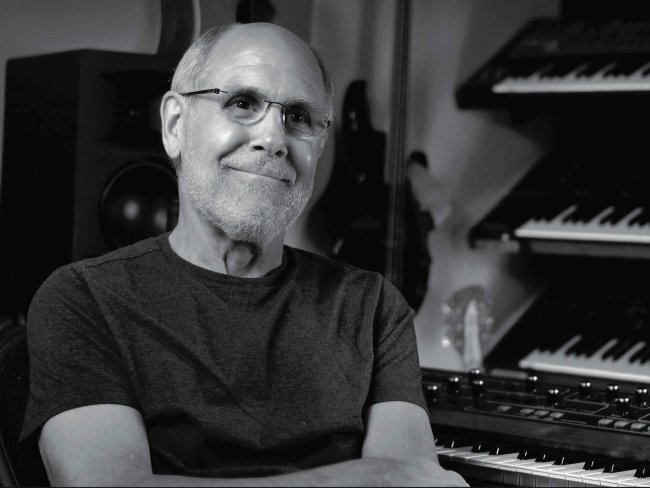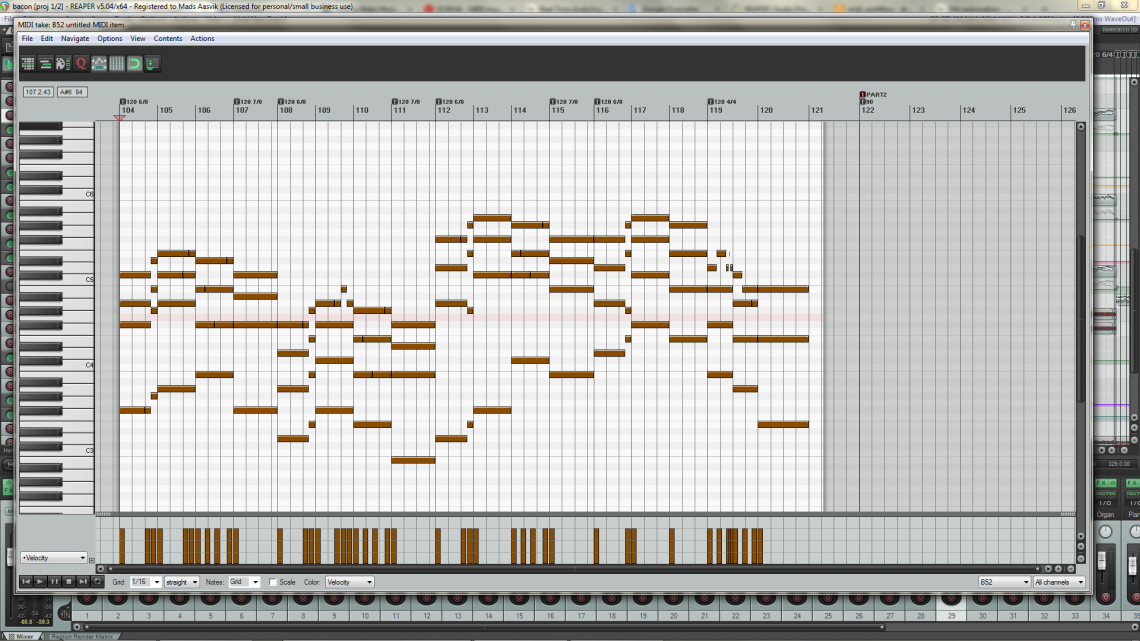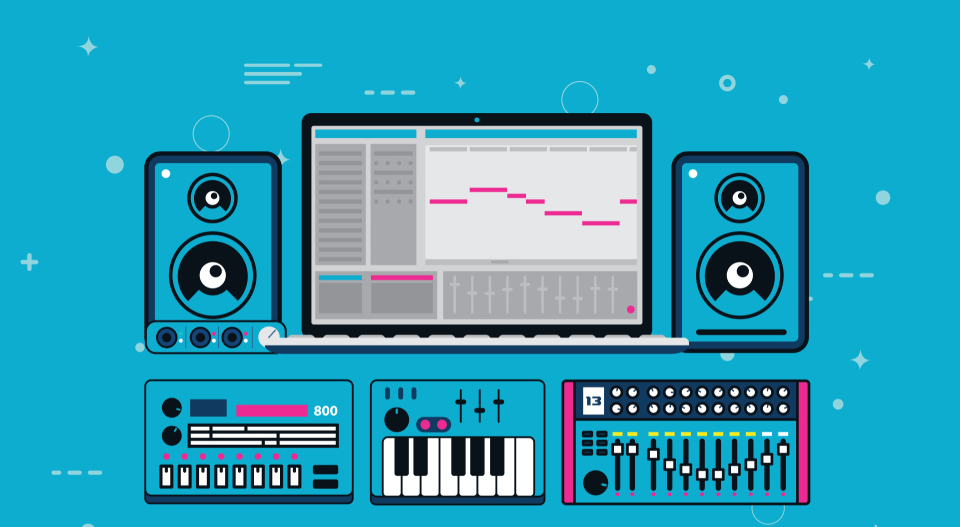What is MIDI? A Beginners Guide
Welcome to the wonderful world of MIDI, where silent digital signals can help make some serious noise! For over 40 years MIDI has very much been the backbone of electronic music creation. While most beginners will be familiar with the term MIDI, the actual function it plays can sometimes be a mystery. This guide will help shine a spotlight on this stalwart of modern digital production. So lock in as we examine MIDI’s significant role in music production, covering its history, functions, and applications.
The Basics
MIDI (Musical Instrument Digital Interface) acts as a universal language for connecting and controlling musical instruments and devices. Unlike analogue signals, it doesn’t carry sound but conveys musical information. Think of it as the silent conductor directing the flow of notes, expressions, and dynamics in digitally created music.
MIDI’s original role was to facilitate communication between different electronic musical devices. Whether you’re working with synthesizers, drum machines, or computers, MIDI ensures they all speak the same language.

Image courtesy of Perfect Circuit Audio
In the modern era where the majority of music is composed solely inside a computer, MIDI’s powers of connectivity are not so called upon. MIDI is still very much at play though as all sequence information is written using MIDI. Plugins and VST parameters are also controlled using MIDI values. The seamless way DAWs operate means that most of us are blissfully unaware that MIDI is the language that makes all the magic happen.
A Journey Through MIDI History
Now that we’ve grasped the essence of what MIDI is, let’s turn our attention to its roots. Picture the early 1980s—a time when musical instruments, computers, and electronic devices existed in separate realms. MIDI emerged as a collaborative effort among major manufacturers to bridge this gap, creating a standardized language for communication.
The brilliance of MIDI lies not just in its invention but in its evolution. Despite being born in an era of analogue synthesizers and drum machines, MIDI has adapted and thrived amidst the digital revolution. In 2020 after almost 40 years MIDI got an upgrade! From the well-worn MIDI 1.0 to the flashy faster MIDI 2.0. For more on MIDI 2.0 check out this post. Despite this recent upgrade, some things have not changed. MIDI’s enduring appeal is evident in the fact that MIDI connections remain a standard feature on contemporary musical equipment to this day.
As we traverse the historical landscape of MIDI, keep in mind the collaborative spirit that birthed it. Industry giants such as Roland, Sequential Circuits, Yamaha, and Korg joined forces, recognizing that a standardized communication protocol would benefit musicians, producers, and the industry as a whole.
Today, MIDI stands as a testament to the foresight of its creators. Its continued relevance speaks volumes about its adaptability and the enduring need for a common language in the ever-expanding world of music technology.

MIDI Messages and Channels
Now let’s dive into the language of MIDI. MIDI supports 16 channels which can all send and receive different instructions or MIDI messages. These messages, such as “note-on” and “note-off,” form the basis of MIDI communication. They instruct devices on when to start and stop playing a note or convey different controller information such as pitch bend. Additionally, MIDI channels act as dedicated highways for different streams of musical data, allowing multiple instruments to communicate simultaneously.
While understanding MIDI messages and channels is not so essential if you’re working fully inside a DAW, a basic understanding of the MIDI language and principles will certainly serve you well.
Connecting Devices
Moving from theory to practice, let’s explore the practical aspect of connecting MIDI devices. Traditionally, MIDI connections involve the use of MIDI cables and connectors. MIDI cables famously feature five-pin connectors (see image below) These physical connections create a link between instruments, forming a network for the conversation between them.
While traditional MIDI connections remain reliable, modern options include USB MIDI and wireless connectivity. USB MIDI simplifies the setup by directly linking MIDI controllers or instruments to computers. Wireless MIDI, such as Bluetooth MIDI, eliminates the need for cables, offering more freedom of movement.
From simply plugging in a MIDI controller to more complex hardware setups, understanding how to connect MIDI devices is your first step towards making some beautiful noise.

MIDI and the DAW (Digital Audio Workstation)
As we progress into the digital age, the integration of MIDI with Digital Audio Workstations (DAWs) becomes paramount. MIDI and DAWs work hand in hand, helping us to shape the music we make.
In the early days, MIDI primarily served hardware synthesizers and drum machines. However, the advent of computers marked a new era. MIDI’s integration with DAWs allows for precise editing, automation, and a level of creative control that transcends traditional recording methods.
Consider MIDI as the digital conductor of your composition. With MIDI, you can record a performance and then edit every nuance seamlessly. This non-destructive editing process provides musicians with the freedom to experiment and refine their compositions with unparalleled precision and control.
Automation is another key feature. MIDI empowers users to automate various parameters within a DAW—volume, panning, and instrument articulations, to name a few. This level of control allows for dynamic shifts and nuanced expressions that would be challenging to achieve through traditional recording.
For beginners entering the digital music landscape, understanding the collaboration between MIDI and DAWs is important. MIDI becomes the conduit through which creative ideas seamlessly flow into the digital realm. However, due to the effortless workflow of modern DAW’s you wouldn’t necessarily know that MIDI is behind it all!
Controllers and Instruments
Now, let’s explore the tangible tools that make MIDI come to life—MIDI controllers and instruments.
MIDI controllers act as a bridge between the physical and digital worlds. They include keyboards, pads, and other devices that allow musicians to interact with and control virtual instruments within a DAW. For instance, when you press a key on a MIDI keyboard, it sends a corresponding MIDI message to your software, triggering a specific note or action.
The variety of MIDI controllers is extensive. Keyboard controllers are popular for melodic instrument control, while pad controllers are favoured for triggering drum sounds, samples or launching clips in live performances. There are also specialized controllers for manipulating parameters like knobs and faders. Choosing the right MIDI controller depends on your musical preferences and workflow. While you can input MIDI information using your computer keyboard or via a mouse, a dedicated controller makes MIDI composition and performance much easier. For a more detailed look at MIDI controllers check out this post
MIDI instruments, on the other hand, generate sound in response to MIDI input. Many traditional instruments now come with MIDI capabilities, and there’s a world of MIDI-specific instruments, such as guitars and wind controllers, that offer unique expressive possibilities.

Sequencing and Recording
So you have your controller and DAW primed for action! Time to focus on the meat and gravy of sequencing and recording.
MIDI sequencing is like creating a musical blueprint in a digital environment. When you play a note on a MIDI controller, it generates a MIDI Note on and Note off message that’s recorded into your DAW’s MIDI sequencer. This recorded data appears as a series of notes on a piano roll or score editor, providing a visual representation of your performance.

What sets MIDI sequencing apart is its flexibility. Unlike traditional audio recording, MIDI data is more like a set of instructions that can be endlessly modified. Want to adjust the timing, change the pitch, or experiment with different instrument sounds? MIDI sequencing allows you to do so with ease.
Recording MIDI data is a straightforward process. Connect your MIDI controller, arm the MIDI track for recording, and play. The recorded MIDI data can be edited, quantized, and manipulated to suit your artistic vision. It’s a powerful tool that empowers musicians to refine their compositions with precision and ease.
MIDI Files
MIDI files, as the name might suggest are the files that carry MIDI performance data. They represent a digital score of your music, capturing every detail for playback. A single MIDI file is equivalent to a single channel of music and is represented by the file extension .mov. They are easily shareable and replicable, making them perfect for collaboration.
The compatibility and convenience of MIDI files has also spawned a thriving industry in commercially available MIDI files. You can download MIDI files of almost every big hit or Classical composition made. These can prove very useful if you’re producing a cover version if only to see what chords were used.
The Sample industry is another area where MIDI files have become prevalent. Unlike audio-based sample loops MIDI files offer the user far more control over the instruments or tempo of a Loop. Often Sample packs will include MIDI files alongside the WAV Samples, providing the user with the best of both worlds.
MIDI and Virtual Instruments
The synergy between MIDI and virtual instruments opens up a world of sonic possibilities in the digital realm.
Virtual instruments, or VST instruments, are software-based emulations of traditional instruments, synthesizers, and soundscapes. They respond to MIDI input, enabling musicians to play and manipulate them in real-time within their DAW. Whether you’re creating realistic piano sounds, experimenting with synthesizers, or orchestrating complex string arrangements, virtual instruments powered by MIDI offer an expansive sonic palette.
MIDI not only triggers the note playback of virtual instruments but also provides precise control over various parameters. This includes shaping the attack, release, and filter settings, allowing for nuanced expression that mirrors the intricacies of playing a physical instrument. This dynamic control can breathe an extra dimension of life into digital compositions.
To integrate virtual instruments into your workflow, connect your controller, select the desired virtual instrument in your DAW, and start playing. Most VSTs will have the separate MIDI controls mapped out to a controller. Many VST’s also offer a MIDI learn function where you can assign different parameters to the various knobs, keys or sliders on your controller. And if that’s not enough, a new generation of controllers such as the Ableton Push 3, support a protocol called MIDI Polyphonic Expression (MPE). This allows for per-note pitch bend and enhanced control over each note’s parameters. The manipulation and movement of your fingers upon a pad or key can control pre-assigned MIDI control information. Perfect for when you feel wanna get your Jimi on as demonstrated in the fantastic video below.
Conclusion
As we conclude our examination of all things MIDI, it’s essential to reflect on the profound impact this protocol has had on music creation. From its collaborative beginnings in the 1980s to its seamless integration into the digital age, MIDI has proven to be a versatile and enduring force.
MIDI is not just a technical standard; It enables musicians, producers, and performers to translate their ideas into a tangible, digital form. Whether you’re composing in a DAW, sculpting sonic landscapes with virtual instruments, or commanding the stage in a live performance, MIDI is the silent collaborator that empowers your artistic vision.
For beginners using a DAW and just getting into music production, you probably won’t need to concern yourself too much with MIDI as a language and form of communication. Like a modern motor car, most of the functions operate under the hood. Generally speaking in a DAW environment, MIDI is only ever referred to in terms of Midi sequencing or Midi files. It is however important to understand that MIDI is the driving force that powers everything!
So, thank you for joining us on this exploration of MIDI. I hope it has helped to de-mistify a term that is widely used yet often misunderstood. Until next time, let the music play and the MIDI signals flow.
Remember – RouteNote Create subscriptions start from as little as $2.99. You also get 10 FREE credits to spend on samples along with access to our FREE sample pack bundle when you sign-up!
